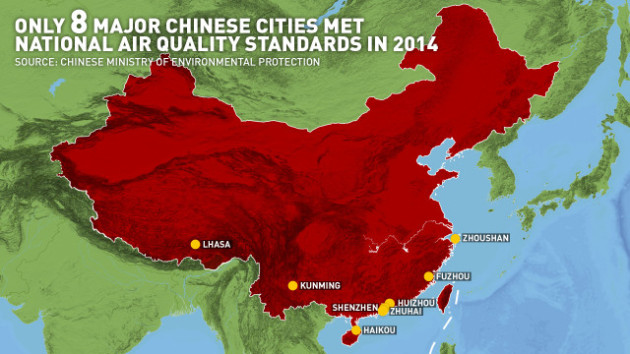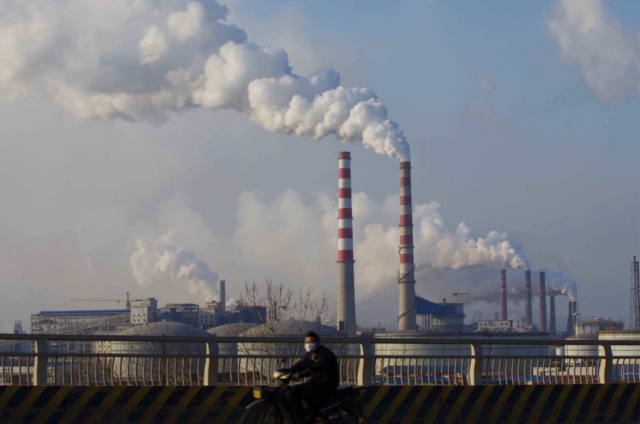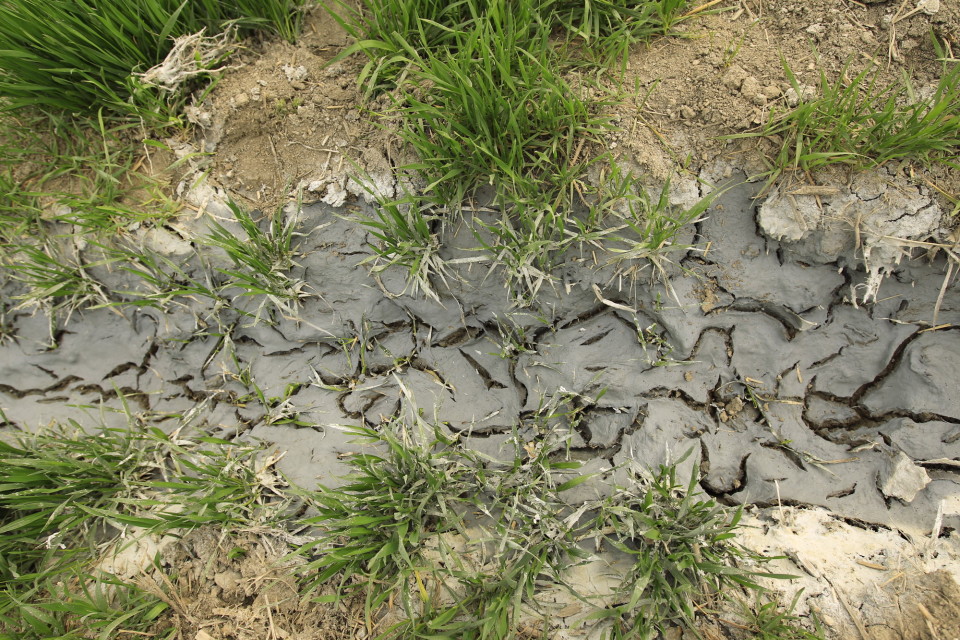The environmental problems that have accompanied China’s development and government efforts to resolve them dominated the first day of the annual session of the National People’s Congress, which opened on March 5 in Beijing and will last until March 15. Chinese Premier Li Keqiang expressed concerns for the environment in his government work report, calling pollution a “blight on people’s quality of life and a trouble that weighs on their hearts.”
To fully understand the work ahead of the government, here are nine charts that highlight the level of pollution in China using government statistics:
AIR POLLUTION
China’s Air Pollution Report published in February 2015 by the Chinese Ministry of Environmental Protection found that only 8 of the 74 major Chinese cities that are subject to air quality monitoring met the national standard for clean air in 2014. Six of those eight cities were located on the eastern part of the country: Haikou, Zhoushan, Shenzhen, Zhuhai, Huizhou and Fuzhou. The other two were Lhasa and Kunming, according to the Ministry of Environmental Protection.

The metropolitan area around Beijing and Tianjin were the most seriously polluted, with eight of the 13 cities in the area on the list of the country’s 10 smoggiest cities. There were only 172 days that qualified to meet the air standard in 2014, a decrease of about 1 percent compared to last year.
In Beijing, the levels of PM2.5 (Fine Particulate Matter), a key indicator of air pollution, were stuck at hazardous levels for weeks in early 2014 and peaked at 35 times the World Health Organization recommended limit. According to the Beijing Municipal Environmental Monitoring Center’s report, a total of 51.8 percent of days in 2013 were unhealthy or worse.
China began to include an index of PM2.5 and ozone in a new air quality standard at the beginning of 2013 and chose 74 pilot cities to meet the new standard. In 2013, only three met the standard.
China’s Ministry of Environmental Protection said that China’s air pollution type has multiple sources of pollution, caused by several factors including coal burning, vehicle emissions, and secondary pollution.
WATER POLLUTION

A river in Wangli town in east China’s Zhejiang province is known as “red river” due to the high level of pollution from red dye in this October 31, 2011. (Photo by CFP)
China’s Ministry of Environmental Protection has found that among 4,778 testing sites in 203 cities, 44 percent had “somewhat poor” underground water quality. The groundwater in another 15.7 percent tested as “very poor”, according to the 2013 China Environment Report.
Water quality improved year-on-year at 647 sites, and got worse at 754 sites, the ministry said.
According to China’s underground water standards, water of “somewhat poor” quality can only be used for drinking after proper treatment. Water that’s of “very poor” quality cannot be used as source of drinking water.
Of the main river basins monitored, 9 percent are essentially useless at Grade V+ — which means they are not usable for agriculture or industry. (See grade explanations below) An additional 28.3 percent of water in China is polluted at Grade IV+ — which means it is not recommended for swimming.
China’s river pollution grading system
Grade:I National nature reserve
Grade:II Protection area for centralized drinking water supply, natural habitat for rare species of fish, and spawning grounds for fish and shrimp
Grade:III Protection for centralized drinking water supply, sanctuaries for common species of fish, and swimming zones for people
Polluted
Grade:IV Bodies of water for general industrial use and recreational water in which there is no direct human contact
Grade:V Bodies of water used for agriculture and general landscape needs
Highly Polluted
Grade:V+ Essentially useless
SOIL POLLUTION
Almost a fifth of China’s soil is contaminated, according to the first-ever official results of a nationwide soil pollution survey, released last March by the Chinese Ministry of Environmental Protection and the Ministry of Land and Resources.
The survey, conducted between 2005-2013, found that 16.1 percent of China’s soil and 19.4 percent of its arable land showed contamination. The report named cadmium, nickel, and arsenic, as top pollutants.
Source: Xinhua, Chinese Ministry of Environmental Protection.
 CGTN America
CGTN America


